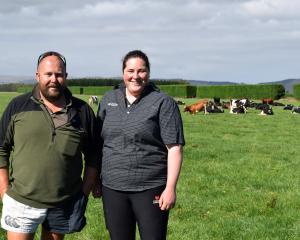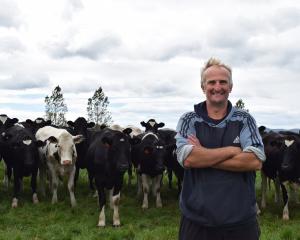
During his presentation at the New Zealand Grassland Association’s 85th conference in Oamaru yesterday, local farmer Grant Ludemann played a clip from regional television news show The South Tonight, which screened in the 1980s.
It showed the district in the grips of drought — or ‘‘the brown tide of destruction’’ as presenter Hilary Muir put it — and cited 90% of farmers would not be able to make ends meet.
Both lambs and ewes were selling for $1.50, the equivalent of a loaf of bread, and the situation was ‘‘extremely desperate’’, then Federated Farmers spokesman Des Pringle said.
Mr Ludemann, a large-scale dairy and sheep and beef operator, has lived in the district for more than 70 years, actively farming for more than 50 of those years.
He said the district had seen more positive change over the past 70 years than any other district in New Zealand, describing it as ‘‘God’s own secret paradise’’.
When he was growing up, properties were small and mixed operations; his father’s 170ha property ran 800 Romney ewes and 40 head of cattle and grew 15ha of wheat. His early memories were of constant drought and farmers forced to eat off wheat crops and send stock away for grazing, Mr Ludemann said.
The theme of the conference was Dust to Dollars, reflecting the change to the district with the arrival of large-scale irrigation schemes. The district was now dominated by dairy farming and dairy support, he said.
Being on the 45th parallel, North Otago was perfect for grassland farming, complemented by a wide range of soils. It was in a rain shadow and, most importantly, had the Waitaki River on its northern boundary.
It was one of the few rivers on the east coast which never came under threat of restrictions and it gave North Otago the consistency to ‘‘produce the dollars’’, he said.
Mr Ludemann spoke of those leaders who had made North Otago agriculture what it is; from the very active and positive Department of Agriculture through to the Ministry of Agriculture and the late Sid Hurst, whom he singled out for spearheading the Lower Waitaki irrigation scheme and then the movement to dairy.
Life changed dramatically as the North Otago Irrigation Co’s two-stage pumped irrigation scheme to the district’s downlands got under way. Some traditional farmers opted out and sold to syndicates which developed dairy operations.
Looking forward, climate change, water quality and care for the environment were the top priorities. The biggest threat — which not only applied to North Otago but also other regions — was the widespread blanket planting of trees and the damage to the environment when those trees were harvested in 30 years’ time. The other challenge was how to account for carbon that grasslands sucked out of the atmosphere, Mr Ludemann said.
Andrew Rodwell, CEO of Aqus — a management company formed by the North Otago and Lower Waitaki Irrigation Cos earlier this year to deliver irrigation scheme management services within the Waitaki — said the good years in North Otago before irrigation were good and the bad years were awful. Even efforts to make rain in Oamaru in 1907, using explosives, failed.
There were now five irrigation schemes in the Waitaki area, covering 85,000 irrigated hectares and making up 12% of New Zealand’s irrigated area.
It had not only transformed farming in the district but also, more broadly, the community.
Yesterday, conference-goers went on a field tour to Mt Pleasant, Rogan and Michelle Borrie’s 882ha inland sheep and beef farm, managed by Paul Murcott and Kate Macgregor.
The property was bought by the Borries in 2017 and is part of a larger farming operation comprising four dairy units, two dairy support units, a bull beef finishing unit and a sheep breeding and finishing unit. Development had been a key focus, and included fencing, irrigation infrastructure, stock-water, tracks and pasture renewal.













